Deleted
Deleted Member
Posts: 0
|
Post by Deleted on Jan 25, 2011 7:01:33 GMT 10
Hi guys, we have a Wartz which is in fact a Hi Lite rebadged. Its a great little van and has a wood frame which needs some work, its fairly original. 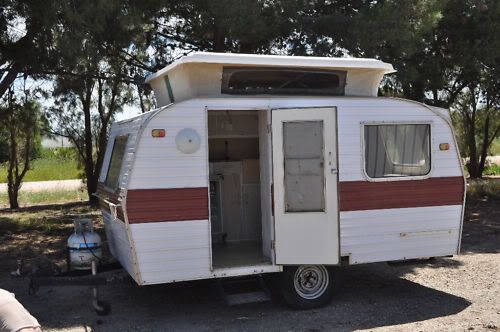 It tows really well and is really easy to back. We are about to start on a resto but would like to find another older van first so that we have one to use all the time. BTW looking for a set of Mags for it. |
|
Deleted
Deleted Member
Posts: 0
|
Post by Deleted on Mar 4, 2011 14:42:06 GMT 10
Its just occurred to me that in my disapointment I didn't post pics of the Wartz. Which is actually built by Hi-Lite, (only know this due to all the help from this forum- thanks all) 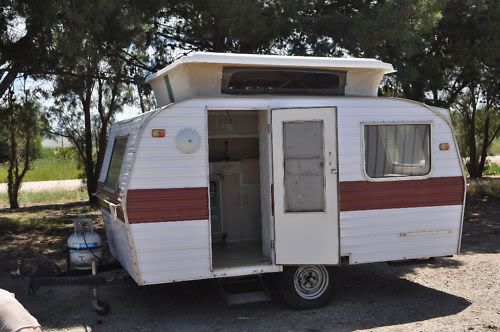 Stove unfortunalety this after I started to restore it (stove that is)  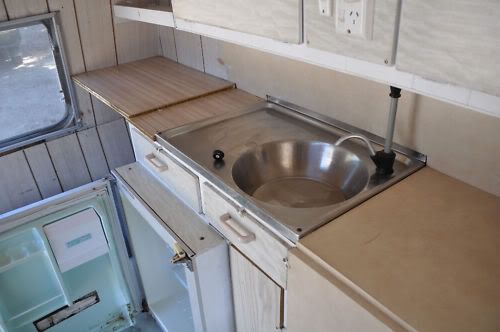 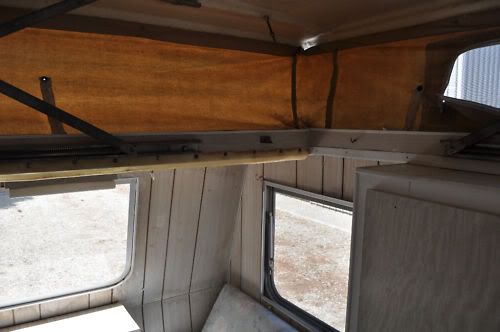 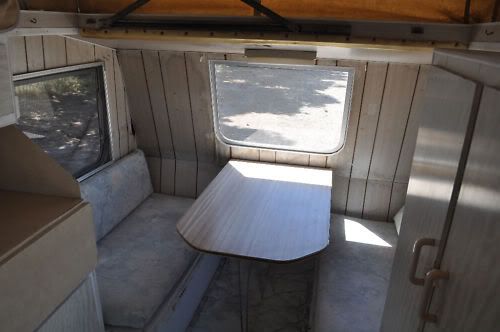 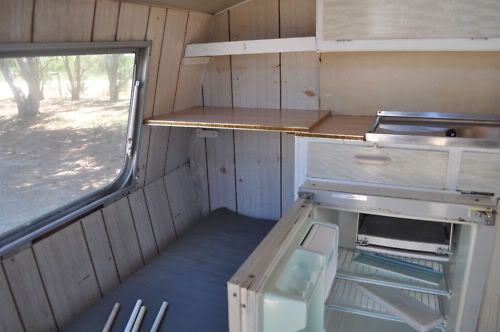 Work has started. am still unsure whether to remove the sailtrack thats attached to the wall, obviously for some sort of annex. (which I don't have.) As discussed before when loaded its to heavy for the MG or Peugeot so I am towing it with the Delta truck or Jeep. It tows really well and I am now happy with it and will be even more so with some rotten frame and pannel replaced. |
|
|
|
Post by bobt on Mar 5, 2011 20:37:24 GMT 10
Hi inncrafers
The van looks a bit of all right. Pity it is too heavy for the MG. Would have looked good behind it crusing down the highway.
bobt
|
|
|
|
Post by millard1399 on Mar 5, 2011 20:57:04 GMT 10
G'day inncrafers, I extracted your first post above from another thread and plonked it in here so the complete story about your van is now all together. Makes it easier for us to follow your van from start to finish. ;D ;D If the sail track is not really bothering you, I'd be tempted to leave it there. You can always get an awning made for the van, even if you don't want to go the whole annexe route. A bit of cover over the door when it's raining makes getting in and out of the van just that little bit less frustrating. Also allows you to have the door open if you wish, and not have the rain belting into the doorway. The photos suggest you don't have a heap of work to do to get the van all ship-shape. Looks pretty neat inside, lucky you!   cheers, Al. ps. I just realised you've got 14' in the heading. Aren't these vans shorter? I thought they were around the 11ft mark.  |
|
Deleted
Deleted Member
Posts: 0
|
Post by Deleted on Mar 8, 2011 7:57:03 GMT 10
Hey you know what, and this might sound really stoopid but now you mention it, it does look shorter than 14'. We bought it described as a 14". Bother better go check.
|
|
Deleted
Deleted Member
Posts: 0
|
Post by Deleted on Mar 8, 2011 8:18:47 GMT 10
Oh dear, Hi Mods, can you please change the heading to 11'.  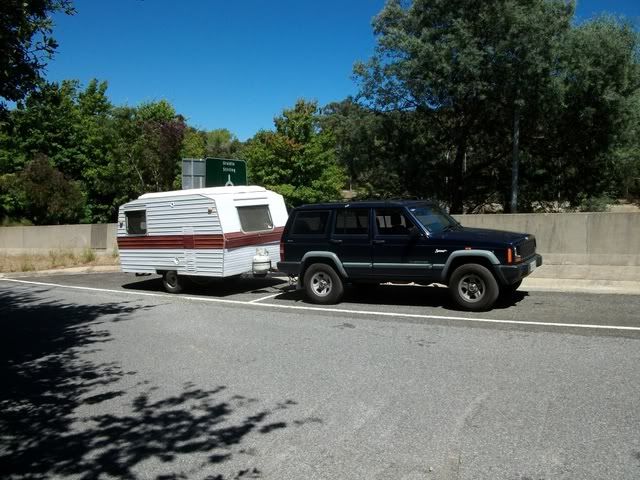 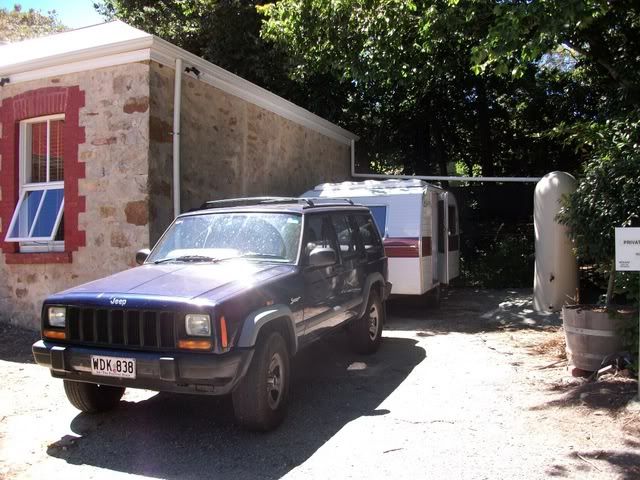 Hi Bobt, yes, I tried it behind the MG, not a great or safe success. Will still be looking for a suitable smaller van for the MG as its our main touring car. Do like the result greedy got on his build. |
|
|
|
Post by millard1399 on Mar 8, 2011 10:33:11 GMT 10
G'day inncrafers, I have made the changes throughout the thread to show it's an 11ft van.  When you've got a spare moment, would you do me a favour please? Would you measure the distance from the centre of the wheel to the bottom of the chassis (the side wall) on your van? I'm in the process of debating whether to put new springs on a 10ft 8ins vintage van I'm working on, but the new springs have a much greater camber than the old. With the old springs on the chassis, the distance from wheel centre to chassis is 3 and a half inches. With the new springs on, the distance is 6 inches. I'm trying to figure out the best way to put the axle on the springs to give the right ride height and overall appearance. In your last pictures above, it seems like the distance between the wheel centre and the chassis could well be about 6 inches, and your van rides fairly high off the ground. And yet, appearance-wise, it has a fairly normal appearance. Maybe my vintage van was too lowered on the old springs. (Maybe someone was towing it behind a drag racer. Nah...it'd be a stretch limo van by now.    ) Thanks, and cheers, Al. |
|
Deleted
Deleted Member
Posts: 0
|
Post by Deleted on Mar 8, 2011 14:36:42 GMT 10
Thank for that Al.
It 4.5" from hub centre to bottom of chassis.
|
|
Deleted
Deleted Member
Posts: 0
|
Post by Deleted on Mar 15, 2011 7:34:19 GMT 10
Hi all, more proof of original manufacturers of Wartz products. Hope you find this interesting. Its from "South Australian Motor" mag dated november 1 1974, (price - get this - 10c). Looking at some of the other adds I suspect that the "Ezytow" sold by Holiday Equipment is also a Hi Lite. 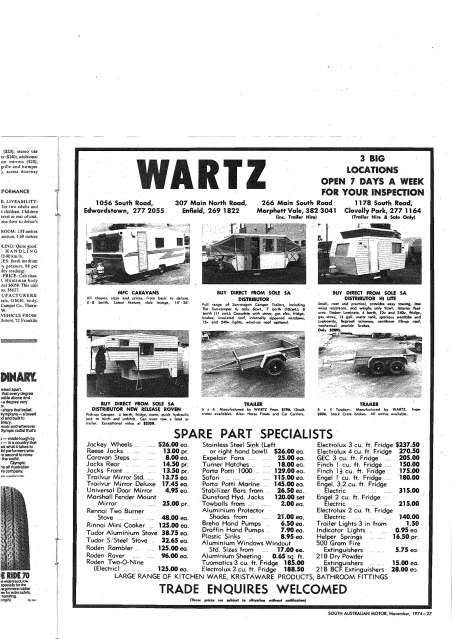 |
|
|
|
Post by millard1399 on Mar 15, 2011 9:24:30 GMT 10
That was a good find, inncrafers.   Sure helps with the history of these old vans when you come across information like that. ;D Thanks for sending the information about the wheel height through. Looks like I'm going to have a van that sits up pretty high off the ground due to the new springs and the need to put the axle underneath them. Might have to pour a concrete floor in the van to get the it to sit a bit lower.    cheers, Al. |
|
Deleted
Deleted Member
Posts: 0
|
Post by Deleted on Mar 15, 2011 12:06:35 GMT 10
Hey Al, you could use flowcote, its a self leveling type of product which i used over the cement board in the new bathroom.  . that would sit it down a bit. Or better still use garnite bench tops.  |
|
|
|
Post by bobt on Mar 24, 2011 17:28:57 GMT 10
hmmm a concrete floor... that would make it interesting
|
|
Deleted
Deleted Member
Posts: 0
|
Post by Deleted on May 13, 2011 8:02:47 GMT 10
Hey all, while working on the van, i found a hidey hole full of bits of canvas and little steel poles. Eureka, now i know how the little bits of sail track above the windows and little receptacles below the windows work. There is a little canvas sunshade/awning for every window not covered by the annex (which I don't have). These sunshades are a maroon colour which match the painted strip at waist line, very neat. I don't think they are original but they are well made.
Don
|
|
|
|
Post by millard1399 on May 13, 2011 9:06:12 GMT 10
Ahhh, nothing like finding a few little treasures in your van! ;D ;D Sounds like a previous owner went to a bit of trouble to get the canvas to match the colour of the van. Always a good sign that previous owner(s) took a bit of care with the van, I think.   cheers, Al. |
|
Deleted
Deleted Member
Posts: 0
|
Post by Deleted on Aug 29, 2011 15:58:04 GMT 10
Hi all, well I thought things were going way to good. We planned to use the Wartz AKA Hi-Lite for holidays last week September early October.  All of my fiddling looked good, lights and electrics, stove etc now working, cupboard doors all replaced, tidied up hinges, catches etc etc. ;D So I thought, as there was some water damage showing I’d take off some of the melamine type panelling to look at what the frame was like before we do some serious miles. Now I was expecting to see a wooden frame which I could repair over which I could put some good quality polished ply. (having seen the beautiful work done by others here.) BUT - There is no frame its all a light cheap chipboard type stuff which is rotten. So is the floor.  My repaired cupboards stove etc have to come back out. It looks to me like the construction method was to lay the floor on the chassis, add the sides then front and back panels all in this nasty sh— er stuff, then clad the lot in aluminium panelling. Does this sound right? Now I thought ahh bugger it I’l scrap the bloody lot and get a better quality van to do up which would be more worthwhile or maybe build a new replica on the chassis.  NAAH, Not so easy, the boss indoors has decided that it’s a lovely little van and wants it restored (maybe that’s because they bought it as a present.) Has anyone seen this type of construction before and does anyone have an idea of how I now proceed? All advice welcome. (LOL apart from thoughts associated with matches, rough roads, falling trees, minor accidents etc)  |
|
|
|
Post by millard1399 on Aug 29, 2011 23:26:49 GMT 10
Oh dear, inncrafers...see what happens when you get nosey and lift the covers for a peek underneath??   Your van is the first of its type that we've seen on the forum in any detail, so we probably know less about it than you do. It seems an unusual way of building a caravan shell, but who knows what was being done in the industry at the time. Now you've got the dilemma of what to do. I guess the only thoughts I can offer are these: 1. Major restorations take a heck of a lot longer than you first anticipate. 2. Depending on the work that needs doing, you need an undercover area a lot larger than the van. 3. If you don't have the tools, the skills, or the money to do the job, it ain't worth starting. 4. You'll never get back what you've put into it. Sometimes it's best to "quit while you're ahead". You could put the lining back in place, and go off and enjoy a holiday in the van. Provided it doesn't leak, and provided it looks like it'll hold together for the trip, it'll give you the opportunity to decide whether it's the right van for you (based on size, layout, ease of set-up/towing, etc). If you are still happy to keep the van after the trip, you could put a plan together to do the restoration somehow. If you decide it's not the ideal van for you, then put it up for sale with all its present defects. Let someone else have the joy of dealing with its problems. Hope this helps you to mull things over a bit. cheers, Al. |
|
Deleted
Deleted Member
Posts: 0
|
Post by Deleted on Aug 31, 2011 14:12:58 GMT 10
 other half has decreed the Wartz must be restored. So as i havn't found the right bondwood to go with the Hudson yet I now have agreement to buy another van. We are looking at a 15' Franklin which is either a '73 or '74 model. Is there anything in particular i should be looking out for?
|
|
|
|
Post by millard1399 on Aug 31, 2011 15:07:44 GMT 10
Ahhh, inncrafers, one of the benefits of getting the lawyers to find loopholes in any caravan agreements, ay?! ;D ;D
A '73 or '74 Franklin? Yep, not a bad lot of vans. There were a few different models of Franklins available around that time - the Regent (egg-shaped), the Hunter (box shaped), the Arrow (a bulge at the front above the windows), and the Freeway (wrap-around windows at both ends).
Depending on which model it is, there can be one or two specific things to look for in the Franklins. Apart from that, there are the usual things you would look for in any make of van from this time period. If you go to the Techo Stuff section of the forum and click on the second thread from the very top, you can read all about our tips for buying a classic caravan. Any water stains on the internal wall linings may lead to big repair jobs. One of the difficulties with repairs on these Franklins is that the walls were made as a bonded sandwich in the factory. You can't just peel off the aluminium cladding or the internal wall panelling without 'destroying' the wall to some degree. Keep that in mind as you do your inspection.
If the van is in quite good condition, it'll be a worthwhile purchase. When the Franklin factory closed down in March 1981, a spokesperson for Franklin said one of the reasons they lost money in the later years was because they had made their vans "too well", and consequently people didn't have to keep replacing their vans as often as Franklin would have liked.
If you can post a photo of the van, that would help me to know what model it is, and whether there's anything else I could tell you that would help in the inspection process.
cheers,
Al.
|
|
Deleted
Deleted Member
Posts: 0
|
Post by Deleted on Aug 31, 2011 15:59:02 GMT 10
Hi Al - ere tis 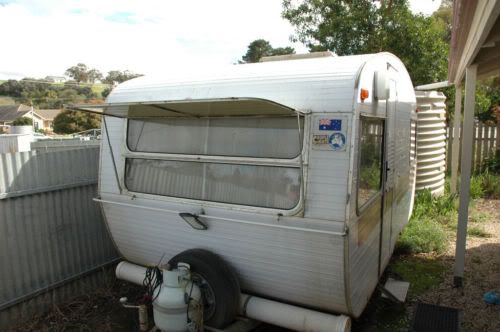 |
|
|
|
Post by millard1399 on Sept 1, 2011 8:51:15 GMT 10
G'day inncrafers, Yep, that's the "Regent" model. The Franklins usually have a sticker showing the model name, located on the cabin either at the top left corner of the door, or down in line with the door lock. The "Hunter" model overtook the Regent model in the evolution of Franklin vans, so from memory the Regent was made up until about 1973. Check the chassis number on the van. For 1970, it will be xxxx-0, for '71 it will be xxxx-1, and for '72 it will be xxxx-2. 1973 is still to be confirmed yet, but looks like it was just numbers used, no '-3' at the end. From 1974, they started using letters at the start of the numbers...Vxxxx for 1974, and 'W' for 1975, and so on. I've always liked the look of the Regents. Nice aerodynamic shape about the cabin.  I'm not aware of any specific issues with the Regent, that you should be looking for. It's always worthwhile to stand at either end of the van and check the line of sight down the 'offside' wall to see if the wall is bowed out or not. Sometimes the framework around the small kitchen window can end up becoming bowed inside the wall cavity, due to the weight of the overhead cupboards bearing down on the wall. If you see any excessively bowed appearance in the wall, it could mean some potential problems. Other than that, you would just go through the same checklist that you'd use for any other van. Hope it turns out to be a 'good-un'! ;D cheers, Al. |
|
Deleted
Deleted Member
Posts: 0
|
Post by Deleted on Sept 1, 2011 17:39:37 GMT 10
Having a good look on Saturday, will let you know how we go.
Don
|
|
|
|
Post by froggy on Sept 29, 2011 20:20:40 GMT 10
Hello Inncrafters
I'm thinking of tackling my 1974 (? - serial number K307) Hi-Line 11ft poptop to fix a floor which is soft in parts, and a slight LHF sag above the entry door. The rest of the van is really in top condition. For the floor a boatbuilding mate suggests a two-mix solution which penetrates and hardens the wood. For the LH side I think thay part of the external skin will have to come off above the door and frame repair undertaken. Do you have any suggestions from your Wartz experience?
Thanks
Froggy
|
|
Deleted
Deleted Member
Posts: 0
|
Post by Deleted on Jan 20, 2012 14:33:12 GMT 10
Jeez, froggy, sorry only just noticed you query. Somehow mised it.
All I can say is that, if you are careful you can pull the whole side out without damaging the cladding and that makes it a lot easier to work on. But do remember to brace inside first, I used three pine 2 x 4's or is that 4 x 2's tied together with strips of 9mm trim that I had left over from work on the house.
|
|
|
|
Post by paul1969 on Oct 9, 2018 11:54:21 GMT 10
G'day inncrafers, I have made the changes throughout the thread to show it's an 11ft van.  When you've got a spare moment, would you do me a favour please? Would you measure the distance from the centre of the wheel to the bottom of the chassis (the side wall) on your van? I'm in the process of debating whether to put new springs on a 10ft 8ins vintage van I'm working on, but the new springs have a much greater camber than the old. With the old springs on the chassis, the distance from wheel centre to chassis is 3 and a half inches. With the new springs on, the distance is 6 inches. I'm trying to figure out the best way to put the axle on the springs to give the right ride height and overall appearance. In your last pictures above, it seems like the distance between the wheel centre and the chassis could well be about 6 inches, and your van rides fairly high off the ground. And yet, appearance-wise, it has a fairly normal appearance. Maybe my vintage van was too lowered on the old springs. (Maybe someone was towing it behind a drag racer. Nah...it'd be a stretch limo van by now.    ) Thanks, and cheers, Al. |
|
|
|
Post by paul1969 on Oct 9, 2018 11:55:26 GMT 10
Hi inncrafers The van looks a bit of all right. Pity it is too heavy for the MG. Would have looked good behind it crusing down the highway. bobt |
|